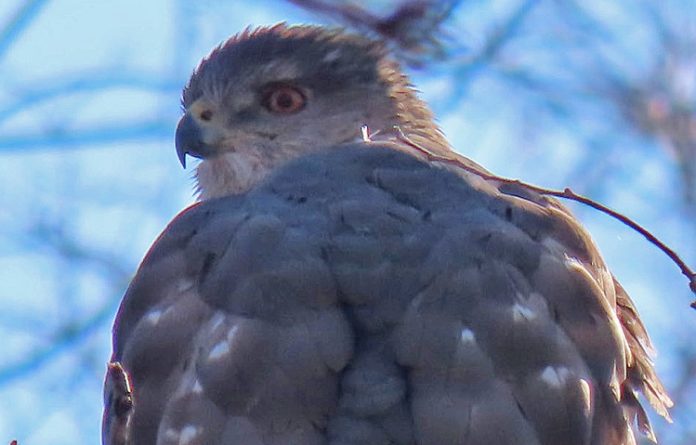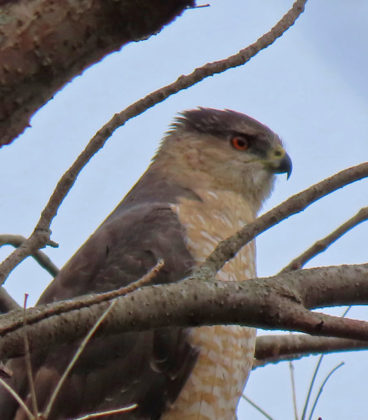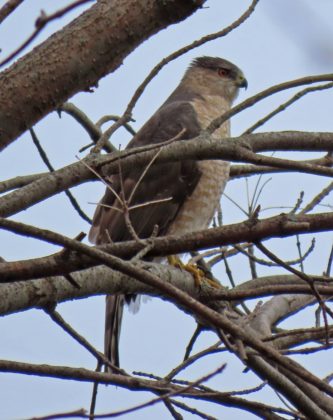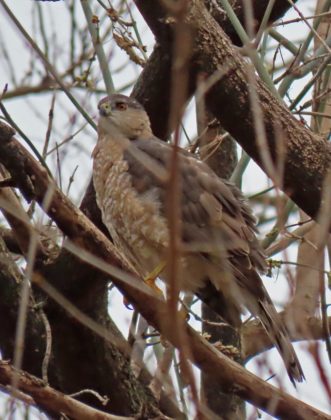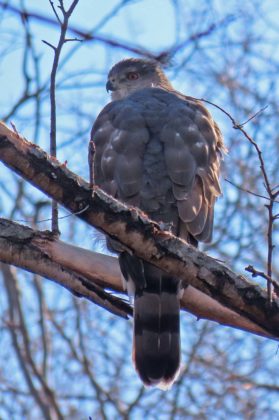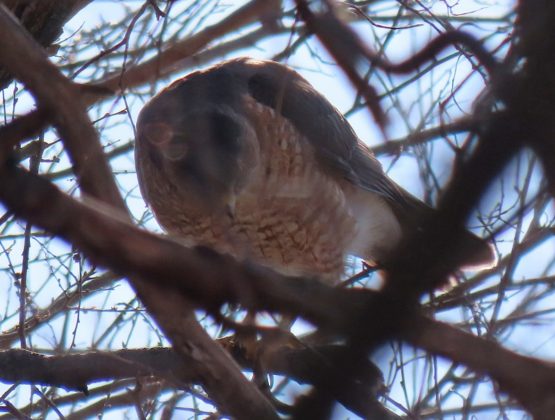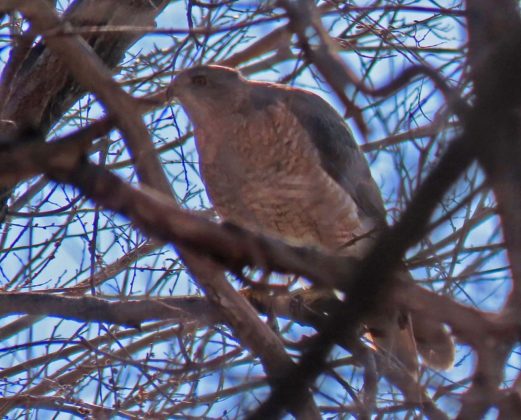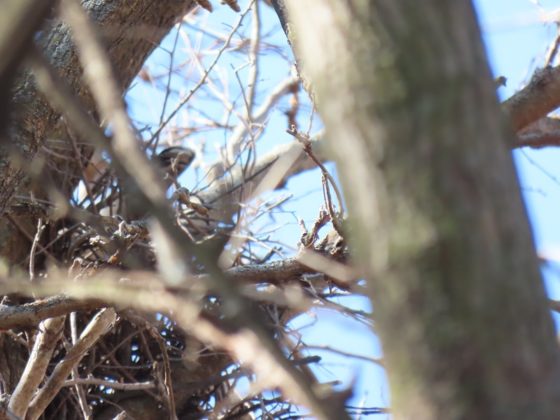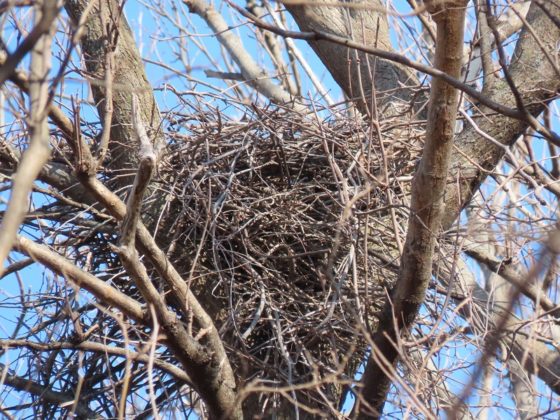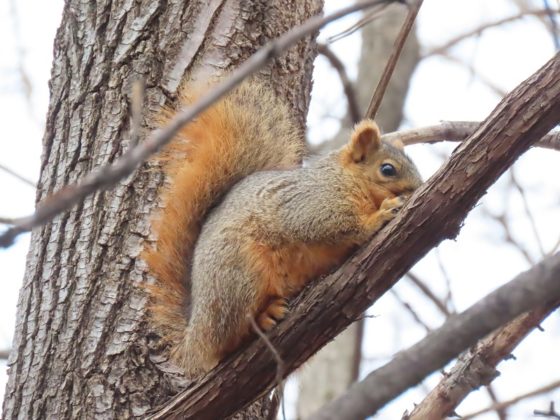My wife and I went for an early morning walk at one of Perry’s city parks. We had the park to ourselves. A friend told me about a pair of hawks that he had seen in the area, and from his description they were probably Cooper’s hawks. I wanted to see if I could find them.
Cooper’s hawks are in the group of hawks called accipiters. They feed primarily on birds. They are about the size of a crow, and the feathers on their backs are a blue-gray color. Their heads are black, and their breasts are whitish with red-orange horizontal lines.
We did not see them on our first pass through the park. However, walking back to our car, we spotted a hawk. It was perched on an arching tree limb directly over the wooded path. The bird sat very still and upright, like a sentry on guard duty, only moving its head as it surveyed the surrounding area.
It was definitely a Cooper’s hawk. The bird’s back was toward us, with its distinctive long banded tail with a white edge hanging down below the tree limb. Since mature male and female Cooper’s hawks look the same, I could not determine its sex.
We stood still and watched and photographed this stately bird. A trio of crows flew over the area, making their raucous calls. Maybe they were too close to the nest because the hawk flew toward them. The crows quickly made a left turn and flew away from the woods. The hawk then landed in another tree barely visible to us.
But it did not sit long. It flew from the perch and toward a small flock of starlings. It grabbed one and flew back toward us, landing in a mass of dense mulberry tree limbs. The hawk began to tear into the starling. After a minute or two it flew to its nearby nest, maybe to feed its young. After a short time it flew from the nest and headed northwest out of our sight.
We dallied a while on the trail, looking at some blooming wildflowers before going to our car. Then around the last bend in the trail was another Cooper’s hawk, sitting at nearly eye level. It seemed smaller than the first one we observed, so it may have been the male.
It took off before we could take any photos of it. We plan to go back to the area every few days to see if we can spot the young emerge from the nest.
At this time, when the world of humans is in a state of upheaval and tension, it is reassuring to know that life in nature continues on, oblivious to the woes of human society.



